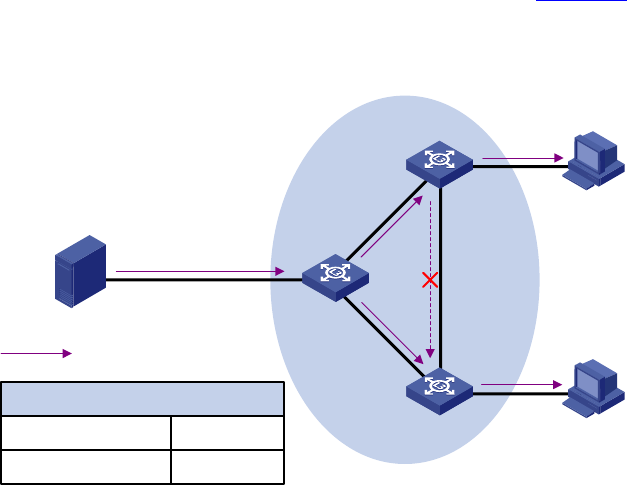
1-12
considers the path along which the packet from the RPF neighbor arrived on the RPF interface to be the
shortest path that leads back to the source.
Assume that unicast routes exist in the network, as shown in
Figure 1-7. Multicast packets travel along
the SPT from the multicast source to the receivers.
Figure 1-7 RPF check process
Source
192.168.0.1/24
Receiver
Receiver
Router A
Switch B
Switch C
Vlan-int2
Vlan-int1
Vlan-int1
Vlan-int2
Multicast packets
Destination/Mask
IP Routing Table on Switch C
192.168.0.0/24
Interface
Vlan-int2
z A multicast packet from Source arrives to VLAN-interface 1 of Switch C, and the corresponding
forwarding entry does not exist in the multicast forwarding table of Switch C. Switch C performs an
RPF check, and finds in its unicast routing table that the outgoing interface to 192.168.0.0/24 is
VLAN-interface 2. This means that the interface on which the packet actually arrived is not the RPF
interface. The RPF check fails and the packet is discarded.
z A multicast packet from Source arrives to VLAN-interface 2 of Switch C, and the corresponding
forwarding entry does not exist in the multicast forwarding table of Switch C. The router performs
an RPF check, and finds in its unicast routing table that the outgoing interface to 192.168.0.0/24 is
the interface on which the packet actually arrived. The RPF check succeeds and the packet is
forwarded.


















